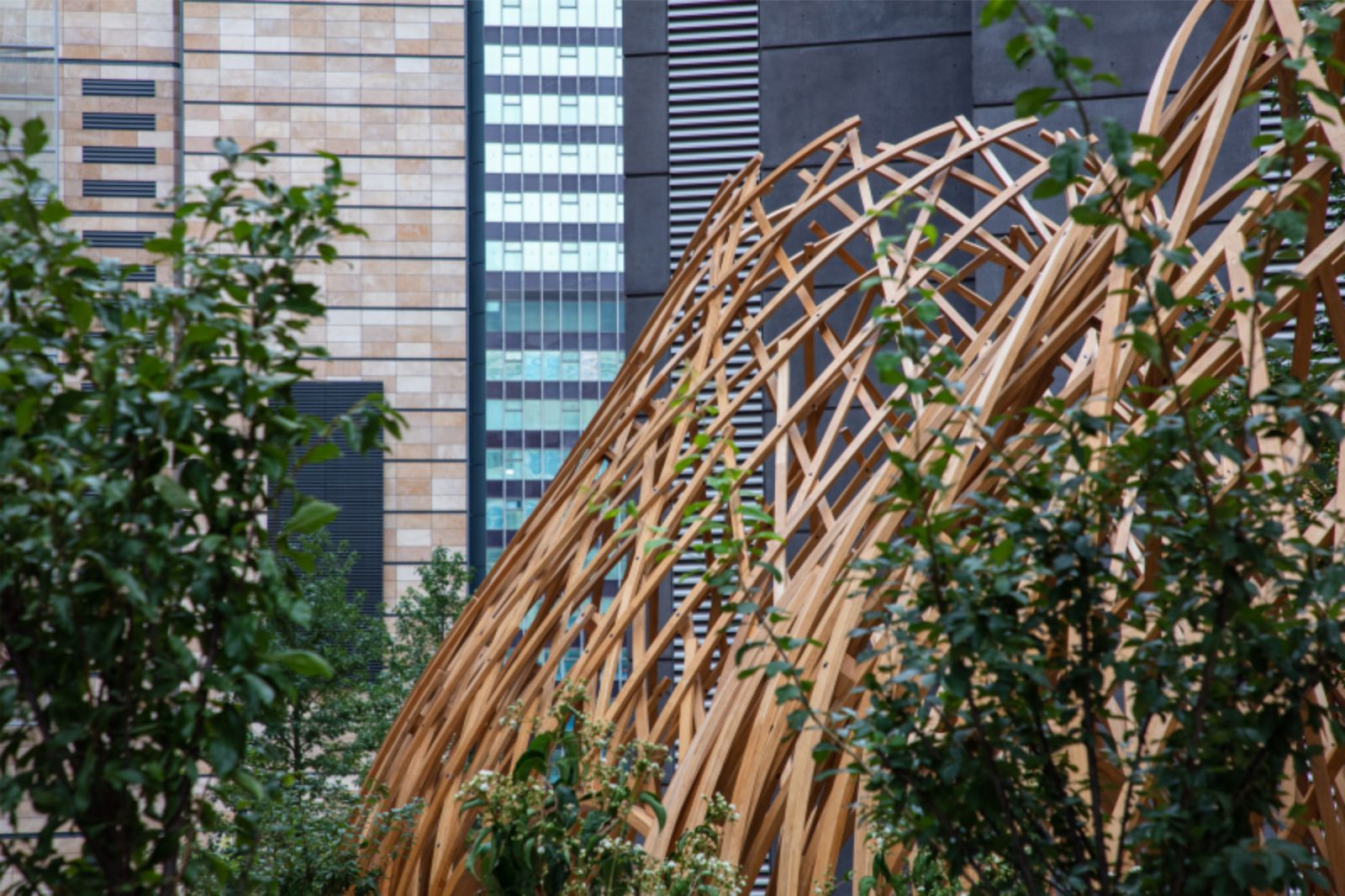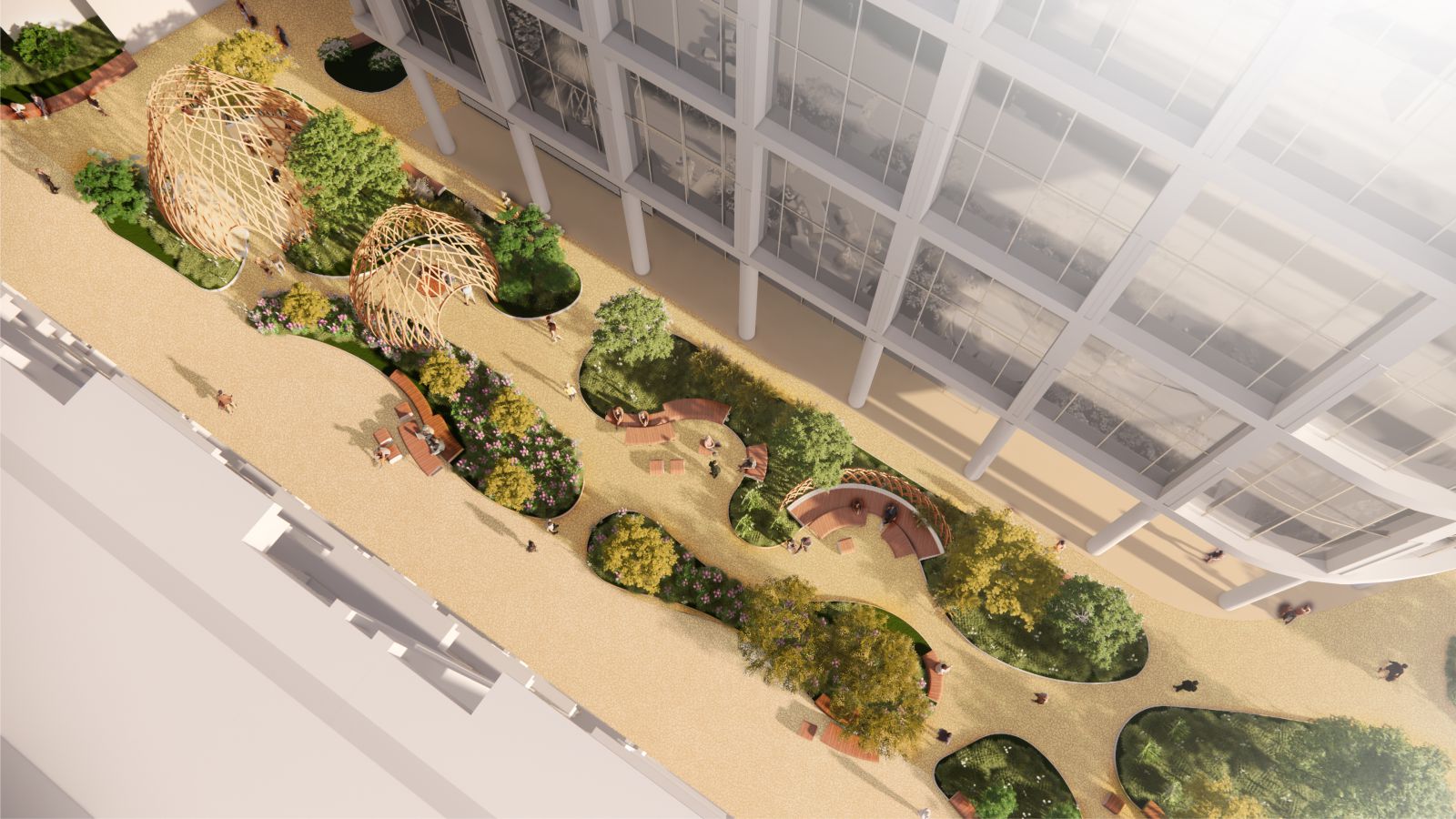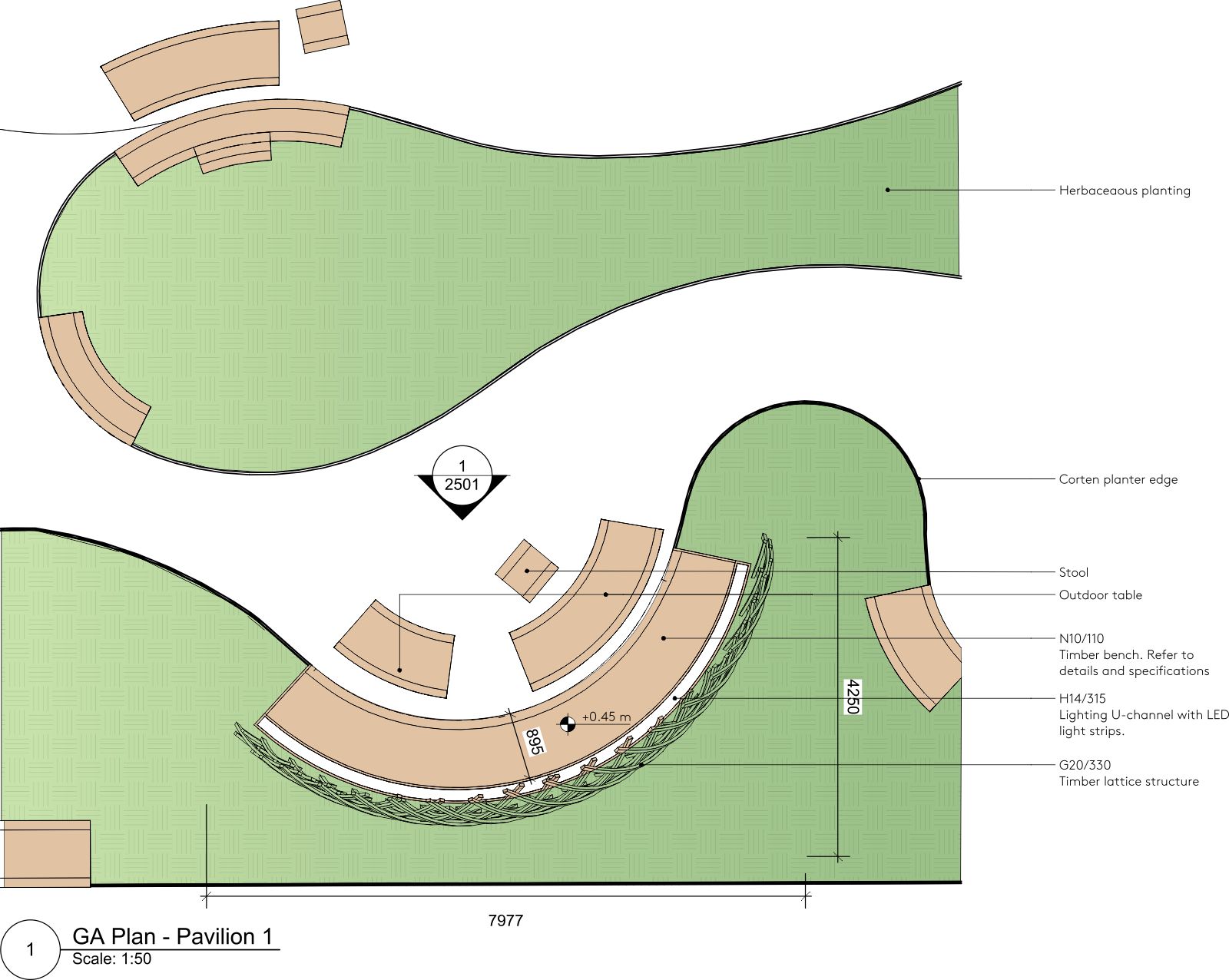Nex- Architecture has collaborated with Xylotek advanced timber structure specialists to create a sequence of inventive laminated oak pavilions newly enhancing the public spaces of London’s Regent’s Place.
Lying east of Regent’s Park and west of Euston station, Regent’s Place is a mixed-use commercial and residential campus developed by British Land from the mid-1990s. Using natural materials, timber furniture and extensive planting, the pavilions have been designed in response to British Land’s vision for revitalising public spaces and pedestrian routes in, through and out of Regent’s Place.

The three new pavilions are semi-sheltered spaces designed for friends and colleagues to sit and relax between meetings or after-work hours, for outdoor theatre and music performances and for those walking through Regent’s Place from the fast-paced Euston Road.
Recently, the Regent’s Place “campus” has seen a change in tenants from corporate blue-chips to media, technology and life science companies. This shift has prompted the refurbishment of the office buildings transforming their environmental performance while offering refreshed workspaces better suited to contemporary needs.
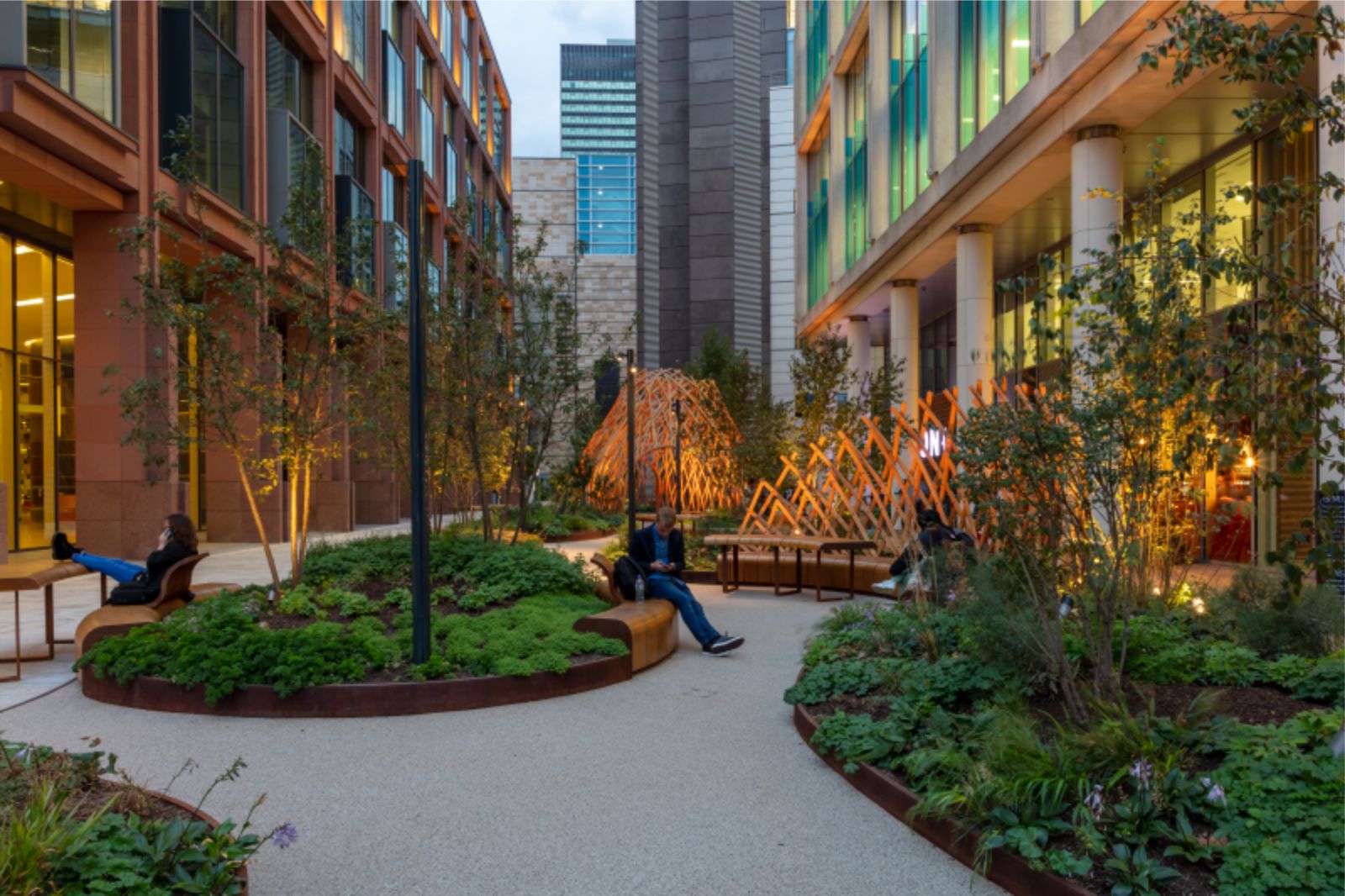
In turn, new tenancies have brought a younger population to the campus and an aspiration to create a livelier and more welcoming public space. The challenge for the architects set out in an invited competition brief was to create a more inviting place for tenants while enlivening connections between Regent’s Place and surrounding streets.
Design Approach
Inspired by nature and particularly by the bundles of fine wood kindling encountered in woodlands, the design of the three Regent’s Place pavilions gathers thin strips of oak in delicate lattices to enclose visitors while also revealing lush planting around them. Rounded in form, the two larger pavilions have a central oculus that draws people’s attention from ground level planting to the sky.
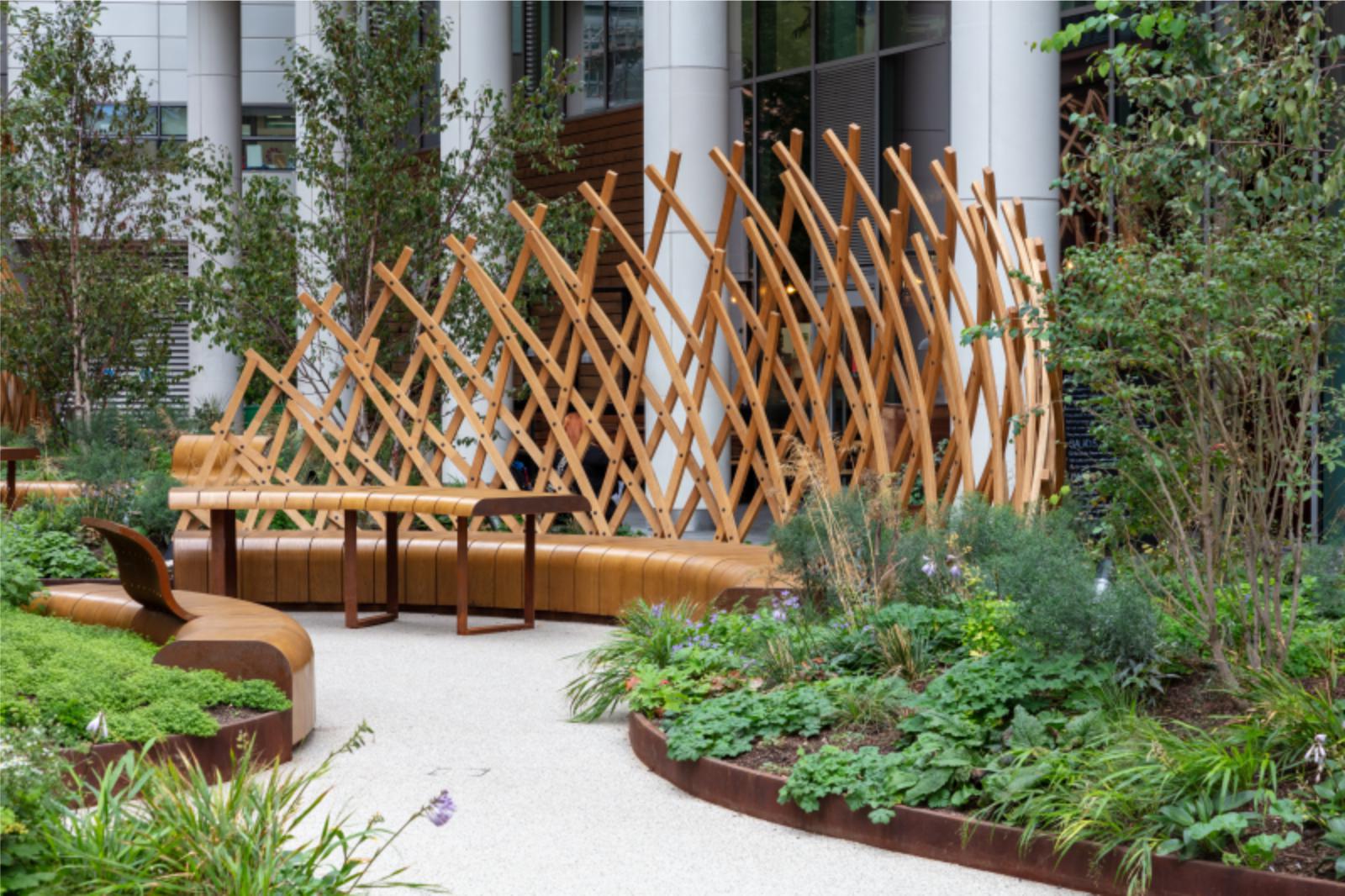
Moving from west to east, the pavilions increase in size. The first welcomes people to gather and sit in conversation. The second encourages children and adults alike to play with a large circular spinning seat positioned in the centre of the path. The final pavilion creates a new tiered performance space for the local theatre group, and a venue for evening and weekend music.
The finished pavilions extend the transformation of the public realm at Regent’s Place. Those working, living and passing through the campus have adopted a variety of new places to gather in settings that bring nature imaginatively into the heart of the development encouraging biodiversity with its landscaping by Townsends.

Design Development
Nex- developed early designs through sketches, study models, and VR simulation to determine the form, size and location of the three pavilions. With these decisions made, Nex- collaborated with design-to-manufacture partners Xylotek to complete computational studies that developed the irregular lattice structures into geometrically rigorous but non-uniform patterns of thin oak laths.
A key challenge for Xylotek has been to complete the design of the structures so that the laths remain slender while being sufficiently stiff to create self-supporting lattices. The final design took advantage of off-site manufacturing to improve the quality of craftsmanship, to cut waste and reduce on-site assembly time.
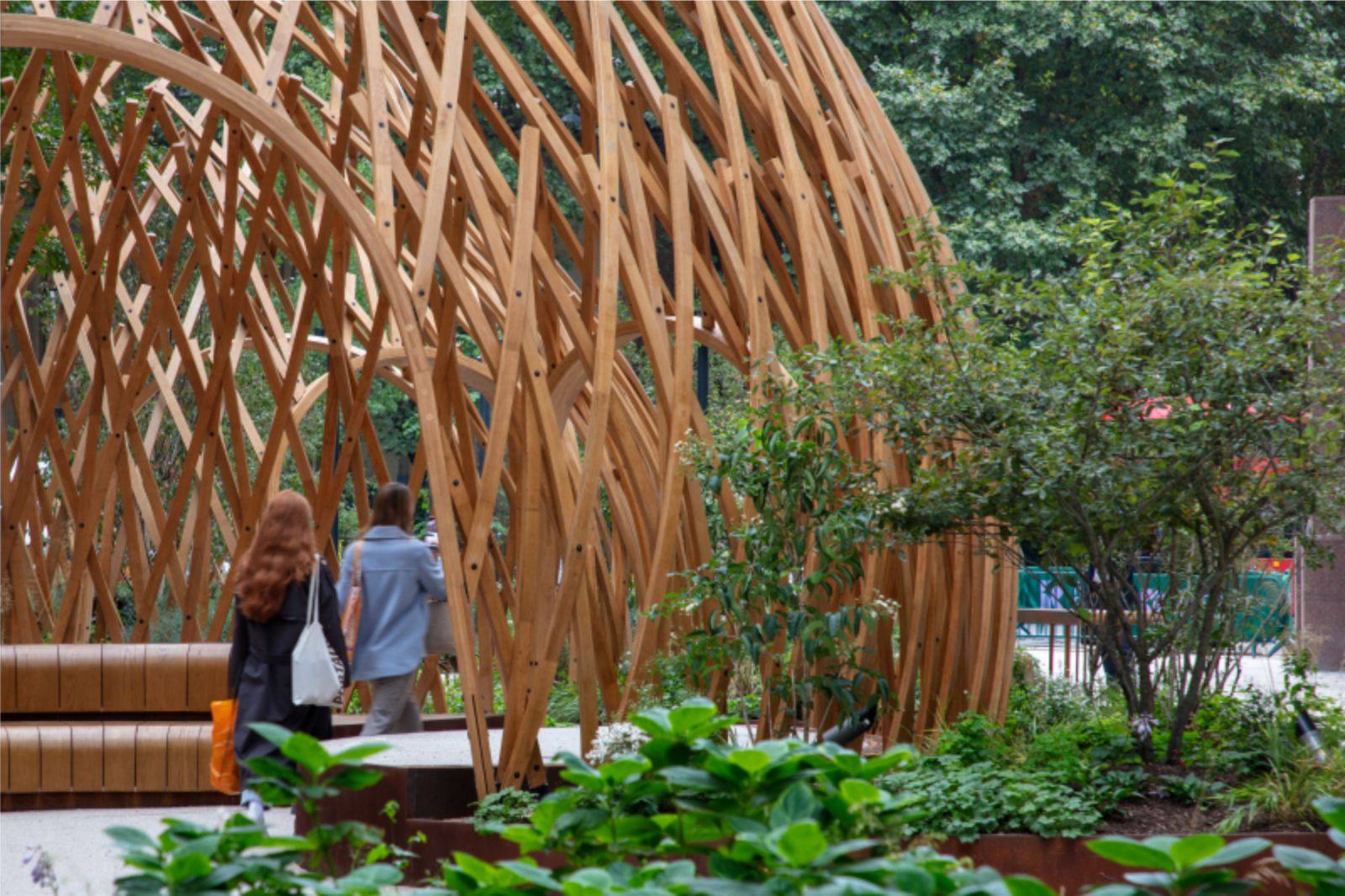
Using sustainably sourced oak, thin strips were bent and laminated into their final curved shapes on room-sized jigs. Laminated strips were then layered together to make lattices, before being transported to site for final assembly with further layers of loose laths.
What appear to be imaginative, yet effortless and natural, plays of forms demanded structural and constructional ingenuity and forensic attention to detail. The laths forming each pavilion are arranged in four layers, with alternate layers spiralling in opposite directions.

Within each layer the laths share similar geodesic curved shapes, meaning that they could be formed from initially straight oak ribbons. This meant that all the laths in one layer could be formed on a single bending jig, whilst visual dissimilarity was created by varying the laths lengths in a repeating pattern overlaid with a degree of randomness.
This process created a visual play between a regular underlying pattern and a sense of natural variation. Source by Nex- Architecture and photo Courtesy of Laura Iloniemi.
